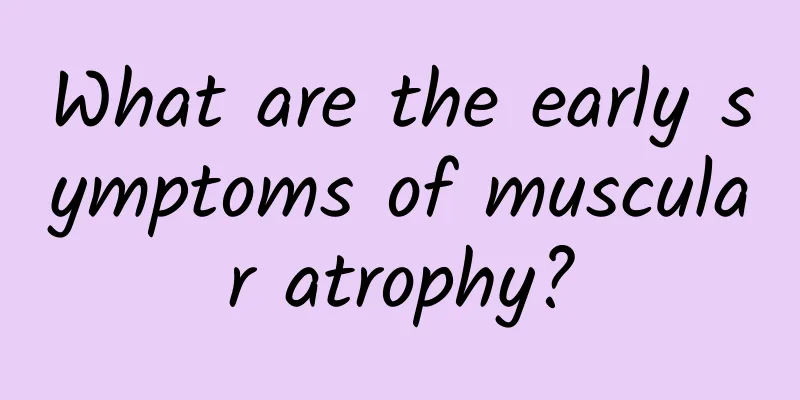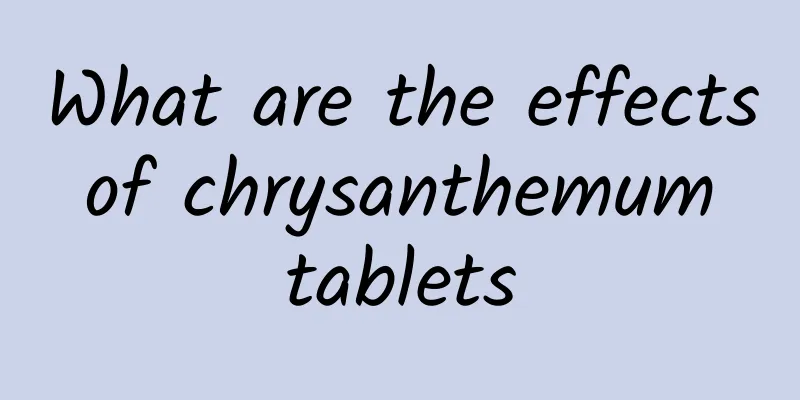How to treat hypoxic-ischemic encephalopathy in premature infants

|
Speaking of hypoxic-ischemic encephalopathy in premature infants, it is obvious from its name that this disease is very harmful to premature infants. How to treat hypoxic-ischemic encephalopathy in premature infants? 1. Supportive care Maintain blood gases and pH within normal range: oxygen should be administered to patients with cyanosis or dyspnea; sodium bicarbonate should be used for patients with metabolic acidosis; it has been reported that it can increase blood flow by about 20%. Maintain heart rate, blood pressure, blood sugar, etc. within normal range. 2. Symptomatic treatment Symptomatic treatment can prevent the already formed pathophysiological changes from further damaging the damaged nerve cells, shorten the course of the disease in the neonatal period, and thus reduce the occurrence of sequelae. The treatment of convulsions, cerebral edema and brainstem symptoms should be active and timely. Once they occur, efforts should be made to control or eliminate them in the shortest possible time. (1) Reduce intracranial pressure. The increased intracranial pressure in HIE can appear as early as 4 hours after birth and is usually most obvious on the second day. Fluid intake should be appropriately restricted within 3 days after birth. Because asphyxiated children often have increased secretion of antidiuretic hormone and renal damage. The urine volume is often small. If there is increased intracranial pressure on the first day after birth, furosemide or dexamethasone can be used intravenously. Repeat the application after 4 to 6 hours and use it 2 to 3 times in a row so as not to inhibit the body's immune function. If the intracranial pressure is still high after the second day, mannitol can be used by intravenous injection for 2 to 3 times with an interval of 4 to 6 hours. Try to significantly reduce the intracranial pressure within 48 to 72 hours after birth. It is rarely necessary to use it after 72 hours. If the increased intracranial pressure does not decrease for a long time, a CT or B-ultrasound examination should be performed to check for large areas of hypoxic-ischemic damage to the brain parenchyma. Hyperosmotic drugs should be used with caution in the neonatal period, and small doses should be used each time to avoid excessive dehydration of the brain tissue, which may induce intracranial hemorrhage. (2) Controlling convulsions: Children with HIE often experience convulsions within 12 hours after birth. After excluding hypoglycemia and hypocalcemia, phenobarbital is the first choice for controlling convulsions. This drug can reduce the brain metabolic rate and is more suitable for convulsions caused by HIE. Short-acting sedatives such as rectal injection of chloral hydrate or intravenous injection of diazepam may also be added until the clinical symptoms are significantly improved. (3) Elimination of brainstem symptoms Children with severe HIE often fall into a coma, and their brainstem symptoms are slow to recover, which prolongs the course of the disease and is prone to sequelae or even life-threatening. In recent years, it has been found that the plasma β-endorphin level in children with HIE is significantly increased. β-endorphin is an endogenous opioid. Any damage to the central nervous system caused by any reason will lead to increased release of β-endorphin, and can cause secondary damage to the central nervous system, thereby causing mental disorders and autonomic dysfunction, and even long-term coma and death. Naloxone is a specific antagonist of opioid receptors, which can effectively block the disturbance of consciousness, respiratory depression and inhibition of cardiovascular sympathetic function caused by endogenous opioids. It improves central respiratory failure, increases cardiac output, improves systemic blood circulation, and increases blood oxygen supply to the brain. Domestic scholars have reported that naloxone can significantly improve the cure rate and reduce the mortality rate of children with severe HIE accompanied by central respiratory failure, convulsions, gastrointestinal dysfunction, etc. This is of great significance for the clinical rescue of children with severe HIE. The indications for the use of naloxone are: ① Children with severe HIE in deep coma. ②Accompanied by obvious central respiratory failure such as irregular respiratory rhythm, bradypnea or apnea. ③ Symptoms of poor circulatory function include dull heart sounds, slow heart rate, pale complexion, cold extremities, and prolonged skin capillary refill time. ④Frequent convulsions. ⑤ There are symptoms of gastrointestinal dysfunction such as abdominal distension, vomiting, and hematemesis. Among them, ① and ② are necessary conditions, and only one of ③④⑤ is sufficient. 3. Drug treatment such as brain cell metabolism activators This type of drugs includes cerebrolysin, citicoline, and fructose 1,6-diphosphate, all of which were trial-produced in the 1970s and 1980s and used in clinical neurology. Their common feature is to promote the metabolic function of nerve cells through different pathways, prevent or reduce the damage to nerve cells caused by various pathological stimuli, and thus restore nerve function. Glucocorticoids have been used clinically for many years as anti-inflammatory, anti-shock and rescue drugs for critically ill patients, and their brain protective effects have been controversial. Gangliosides are a class of sialic acid-containing glycosphingolipids that are widely present in the cell membranes of various tissues of vertebrates and are most abundant in nerve cells. Gangliosides can promote neuronal differentiation, neurite outgrowth and synapse formation, and are involved in the regulation of neural plasticity and functional recovery after brain injury. Therefore, they are believed to have neurotrophic and neuroprotective effects on the central and peripheral nervous systems. Edaravone eliminates or reduces the production of oxygen free radicals, especially superhydroxide ions, and alleviates lipid peroxidation reactions that lag behind the production of oxygen free radicals. The two work together to reduce damage to nerve cells and thus reduce cerebral edema. |
<<: What is cerebral palsy? How to treat cerebral palsy?
>>: What will happen if you have severe kidney deficiency? You must know these hazards
Recommend
Can cranberries really cure gynecological diseases?
Cranberry is a relatively common fruit with relat...
What causes cold calves?
The calves of some people are not prone to gettin...
What should I do if my nails are separated by nail bed?
Onychomycosis is a notorious disease in life. It i...
How to treat eczema for many years
Eczema is a common skin disease. For some people,...
What should I do if my child has spider nevi on his face?
If red spots appear on human skin and there are s...
Nausea after eating
There are many reasons that cause a person to hav...
What effect does Mommy Love have on babies?
People who have children at home often hear about...
What is the principle of cupping?
As we all know, cupping is a treatment method in ...
7 symptoms to check if you have a lot of toxins accumulated in your body
Poisoning symptom 1: Bad breath Bad breath refers...
How to treat acne? This is the correct way!
Acne is a very common skin disease, which is espe...
Where should I apply moxibustion if I have a bad heart?
It is the beginning of autumn now, which means we...
6 months pregnant vaginal pain
We attribute the vaginal pain of ordinary women t...
What is the Chinese medicine Lulutong
I believe many people will be surprised to hear t...
Is drooling from the corners of the mouth a sign of cerebral thrombosis?
When people reach middle age, the body's vari...
What are the benefits of moxibustion on Yongquan acupoint?
Yongquan Point is the largest acupuncture point i...









